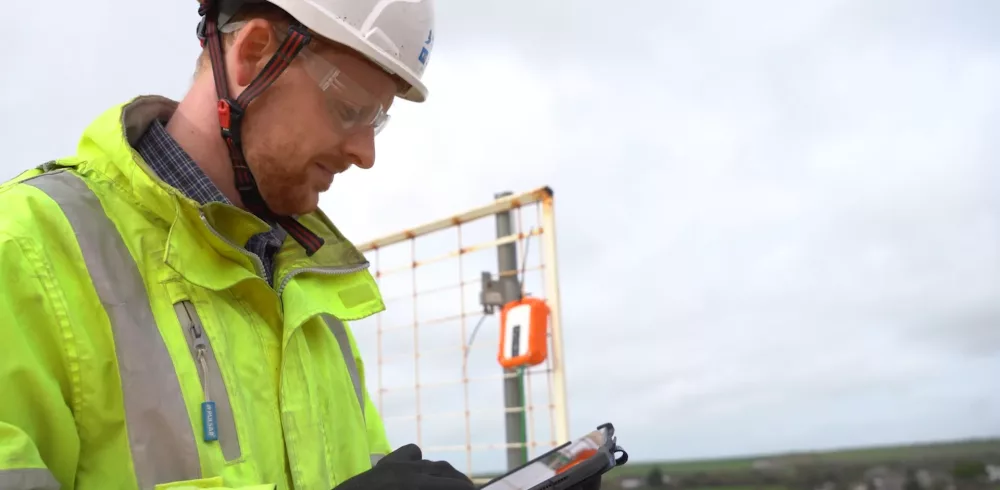- Concrete sensors reduces formwork striking times
- Successful trial of concrete sensor technology benefits major projects in road, rail and water
Costain, the infrastructure solutions company, has made significant time and efficiency savings for its customers after using new concrete sensor technology.
Costain’s materials engineers have been using Maturix’s concrete sensors to keep track of the strength and temperature of setting concrete. The technology has been deployed across a number of Costain’s projects in the road, water and rail sectors.
The Gaia 200 sensors, each the size of a large smartphone, send real-time temperature and strength data wirelessly to engineers, temporary works designers and other specialist contractors. This information helps them make faster, more informed decisions, for instance about when to remove the formwork following a concrete pour. The introduction of these sensors has reduced the length of time that the formwork is in place by around 33%, on average.
Traditionally, concrete pours are tested by physically removing cube samples to be examined under lab conditions, with a typical pour requiring around six cubes. The ability to record readings directly and accurately from sensors means that these tests are no longer required. One Costain project has used the sensors for more than 80 different pours and structures, eliminating the need to conduct destructive testing of approximately 500 strike cubes.
Bhavika Ramrakhyani, head of materials at Costain, commented: “We have an important role to play in maximising efficiency for our customers without compromising on quality or safety. It is important that our engineers have instant access to the right information at the right time, with crucial information sent directly to their devices and laptops. This means they can make informed decisions to accurately determine when it is safest to remove the temporary falsework and formwork after a pour.
“We’ve already seen enormous efficiency benefits. Programme delivery speeds have improved considerably, with striking times reduced by a third on sites where we have used the sensors. At the same time, the technology enables us to repurpose and reuse more of our temporary structures, as well as reducing the quantity of materials used, lowering our carbon footprint, which is another major benefit.”
Anojan Selvarajah, materials engineer at Costain, said: “We’re pouring more than a thousand cubic meters of concrete every week, so it’s important that we can safely and easily monitor concrete strength data with a high degree of accuracy throughout the construction cycle. As an engineer I found this system to be very reliable and user friendly to use on sites.”
Tobias Ejersbo, CEO at Maturix, added: “Costain has a fantastic heritage in UK infrastructure and a track record of innovating to realise greater efficiency. We are pleased that its engineers are seeing the benefits from using our real-time concrete monitoring system to keep track of the strength and temperature of dozens of pours across multiple different projects.
“As someone passionate about technology and not from a construction background, it is amazing to see how Maturix can help others with their passions. Construction is evolving at such an amazing rate we are so privileged to be part of the journey.”
Costain is an advocate of Production Thinking, which combines modern methods of construction with new technologies and materials, digital tools and smart decision making, all with the aim of driving productivity. More than a thousand people at Costain have completed production thinking e-learning training to further drive quality, predictability, safety and low carbon thinking into customer delivery teams.
Manufacturing & Engineering Magazine | The Home of Manufacturing Industry News















